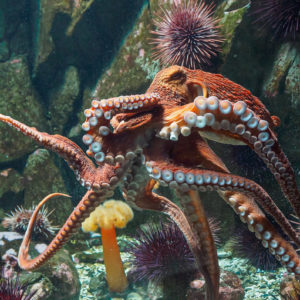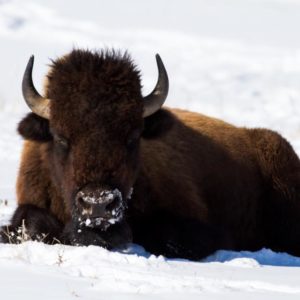Swimming with Species – The Sei Whale
Ever wonder how life is in the deep blue sea? What lives among coral reefs, undersea mountains and volcanos, grooves and caves? What the differences are between freshwater and saltwater biodiversity? What’s the biggest species? The fiercest? The weirdest? Well, we wondered too; and thus, let’s go Swimming with Species to find out all about animals that lurk in the waters around Canada!
Today’s species is the Sei Whale!
The Sei Whale gets its name from the Norwegian word, “seje” which means Pollack. It is fitting seeing as how the Sei whale is often found with the Pollack in Norway. The Sei whale is found all across the world both in subtropical, temperate and subpolar waters. They prefer mid-latitudes, and can be found in the Atlantic, Indian and Pacific Ocean. In the summertime they are often found off the Gulf of Maine and Georges Bank (between Cape Cod, MA, USA, and Cape Sable Island, NS, CA).
At the water’s surface, sei whales can be identified by their long sleek body that is a dark bluish-gray to black colour and white or cream-coloured underside. They also can be sighted by their 10 to 13 feet bushy blow. If you spot a Sei whale, you might also see oval-shaped scars (likely from cookie-cutter sharks and lamprey bites). But it’s unlikely that you will see one, because Sei whales are fast swimmers, reaching speeds over 55kmh, so it’s possible that by the time you realize it’s a Sei whale, it’s already swam away!
Sei whales have a tall, hooked dorsal fin located about two-thirds down their back. Instead of teeth, Sei whales have between 219 to 410 baleen plates (long, finger-nail like plates) which are dark in colour. These teeth make it easy for them to feed on plankton (including copepods and krill), small schooling fish and cephalopods (including squid) which all consist of its preferred diet. They both gulp and skim their food, and dawn is when the Sei whale is most likely to be feeding. On average, Sei whales eat 2,000 pounds of food per day. In order to feed, Sei whales dive below the surface, and can dive anywhere from 5 to 20 minutes to feed. Unlike other whales, Sei whales do not arch their back before diving, they simply sink below the surface.

A photo of a sei whale mother with her calf
Although it is unknown where Sei whales breed, it is known that they generally mate and give birth during the winter in the lower latitudes. The females breed every 2 to 3 years and have a gestation period of 11 to 13 months. When born, their calves are about 15 feet long and already weigh 1,500 pounds! The mothers will burse their calves for 6 to 9 months before weaning them off. Sei whales become sexually mature at 6 to 12 years of age when they reach about 45 feet in length. As adults, Sei whales can grow up 50 feet long and weight as much as 100,000 pounds, with the females slightly larger than the males! Their average lifespan is between 50-70 years. Although Sei whales are largely solitary animals, they have been known to swim in small groups, up to 6 at a time and on rare occasions up to 50 during certain feeding periods. The Sei whale is known for creating low-pitched sounds for communication.
The Sei whales are under various threats. The three largest threats are vessel strikes, entanglement and ocean noise. Unintentional vessel strikes can seriously injure or kill Sei whales. With increased sea traffic in shipping routes, the unintentional vessel strikes increase, and so does the ambient noise and pollution. Also, getting caught in the fishing gear is another large problem. Getting tangled in the pots, nets, and traps can result in swimming long distances with gears or nets attached, which causes fatigue. Fatigue can then compromise their feeding ability and/or injure them severely. Severe injury can lead to reduced reproductive success and death. As for ocean noise, since the Sei whale communicates with low pitched sounds, so, the underwater noise threatens their ability to communicate. It can also cause erratic behaviour and drive the Sei whales away from their feeding grounds.



